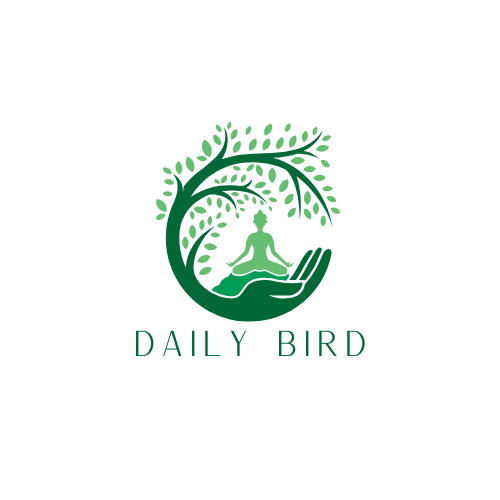In the hustle and bustle of daily life, it’s easy to forget about the one thing that keeps us going—our breath. Yes, that invisible yet vital force that enters and exits our bodies like a stealthy ninja. But what if taking a moment to notice this breath entry could transform your day? Imagine feeling more grounded, focused, and maybe even a little less frazzled.
Understanding Noticing Breath Entry
Noticing breath entry plays a crucial role in enhancing well-being. Paying attention to breathing habits can foster mindfulness and improve overall quality of life.
Definition and Importance
Noticing breath entry refers to the awareness of inhalation and exhalation cycles in daily life. Breathing serves as an anchor to the present moment, promoting a sense of calm. Its importance lies in stress reduction and improved mental clarity. Realizing the breath can shift focus from distractions and enhance emotional stability. Practicing this awareness helps individuals reconnect with their bodies and establish a stronger sense of presence.
The Science Behind Breathing Awareness
Breathing awareness operates on the principles of physiology and psychology. The act of noticing breathing stimulates the parasympathetic nervous system, leading to relaxation and reduced anxiety. Research indicates that focused breathing can lower heart rates and blood pressure. Engaging in breath awareness practices leads to positive changes in brain activity. Techniques such as mindful breathing enhance cognitive function and emotional resilience, establishing a profound connection between mind and body.
Techniques for Noticing Breath Entry

Techniques for noticing breath entry enhance awareness of inhalation and exhalation, cultivating mindfulness and relaxation.
Mindfulness Practices
Mindfulness practices involve intentional focus on the present moment. Engaging in these activities can transform one’s experience of breath. Direct attention to sensations that arise during breathing, such as air entering and leaving the body. Observe how the chest and abdomen expand and contract. Practicing mindfulness for just a few minutes can increase emotional stability and reduce stress. Guided meditations, yoga, and body scans serve as effective options. Incorporating these practices regularly enhances overall well-being.
Breath Counting Method
Breath counting method simplifies breath awareness. It encourages focus by counting each inhale and exhale. Begin by inhaling deeply and then exhaling fully. Count “one” after the first exhale. Repeat this process, counting up to five, then starting again at one. This technique keeps thoughts anchored on breathing, reducing distractions. Practicing daily, even for five minutes, can improve concentration and calmness. Using this method can create a sense of control amidst a busy environment, reinforcing a connection to inner peace.
Benefits of Noticing Breath Entry
Noticing breath entry offers significant advantages, impacting mental and physical health. This awareness leads to many positive changes.
Mental Health Improvements
Enhanced mental clarity results from focusing on breath patterns. Individuals often report reduced anxiety and increased feelings of calmness. Regular practice can also improve emotional regulation, allowing them to handle stress more effectively. The act of breathing mindfully triggers the parasympathetic nervous system, which lowers heart rates and invites relaxation. Through breath awareness, people develop a deeper connection to their thoughts and feelings, promoting a healthier mental state. Studies indicate routines involving breath noticing can lead to long-term improvements in overall mood and resilience.
Physical Well-Being
Physical benefits accompany breath awareness practices as well. Noticing breath entry can improve oxygen flow throughout the body, which increases energy levels. Enhanced lung capacity is often a result of consistent breath-focused techniques. Moreover, individuals experience lowered blood pressure and improved cardiovascular health when they engage in focused breathing exercises. Incorporating breath work into daily routines leads to better posture and reduced tension in muscles. Regular attention to breath enhances physical performance in activities such as yoga or sports, benefiting overall health.
Challenges in Developing Awareness
Developing awareness of breath entry presents several challenges. Individuals often face barriers that hinder their ability to focus on breathing.
Common Obstacles
Distractions frequently disrupt breath awareness, making it hard to stay present. Stressful environments create mental noise that diverts attention from breathing. Furthermore, pre-existing habits can complicate the journey to mindfulness. Rushed lifestyles often lead to shallow breathing, which diminishes the effectiveness of awareness practices. Emotional responses can also pose a challenge; feelings of anxiety may emerge when slowing down to focus on breath.
Tips for Overcoming Barriers
Practicing in a calm and quiet setting can significantly enhance focus on breath. Setting aside specific times for breath awareness helps create a routine. Incorporating gentle reminders throughout the day encourages individuals to redirect their attention. Engaging in simple breathing exercises, like counting breaths, promotes a sense of control and reduces distractions. Participants may find it helpful to gradually increase the duration of practice, easing into breath awareness more comfortably. Emphasizing consistency over perfection fosters a positive experience while developing this essential skill.
Noticing breath entry serves as a powerful tool for enhancing overall well-being. By cultivating awareness of each inhale and exhale, individuals can unlock a deeper sense of calm and clarity. This simple yet profound practice fosters mindfulness and emotional stability, allowing for a more grounded approach to daily challenges.
Incorporating breath awareness techniques into everyday life can yield significant benefits, from improved mental clarity to better physical health. As individuals commit to this journey, they may find that the act of breathing becomes not just a necessity but a source of empowerment and resilience. Embracing the breath can lead to lasting positive changes, enriching both the mind and body.





